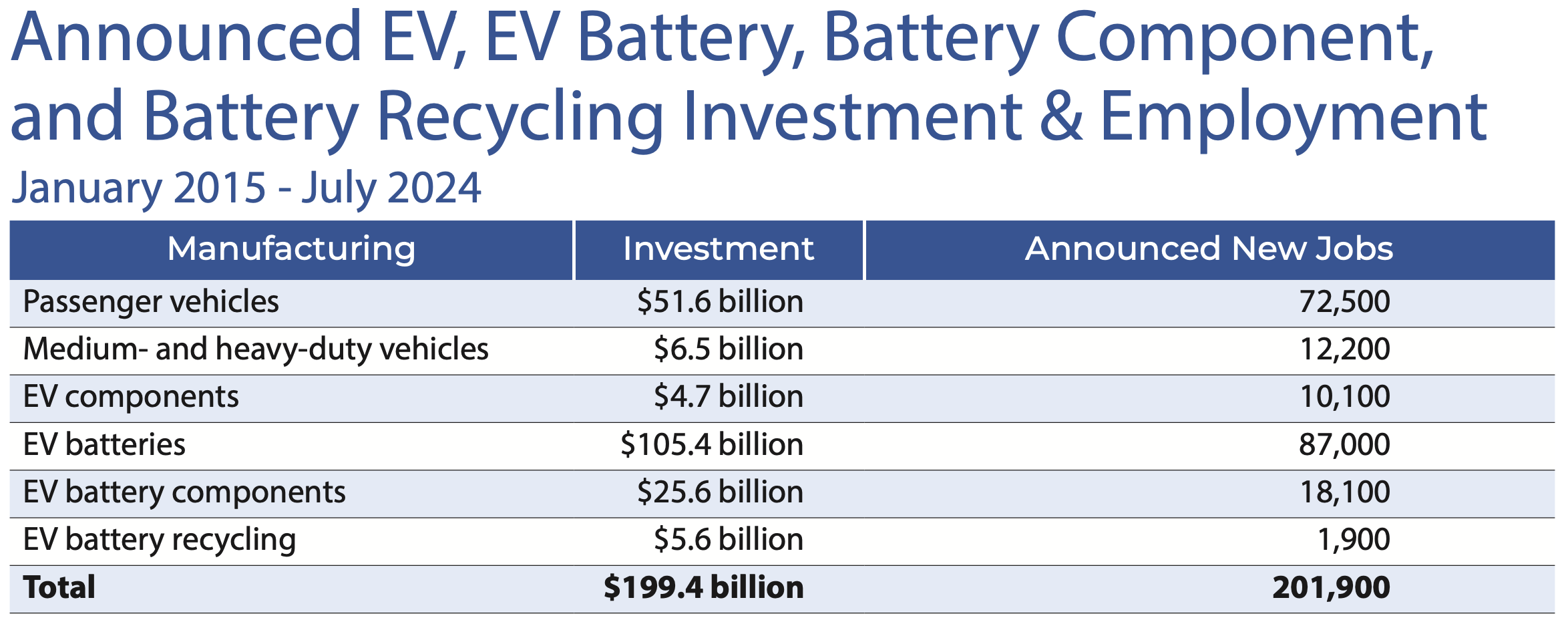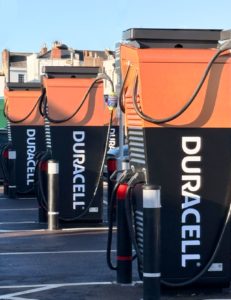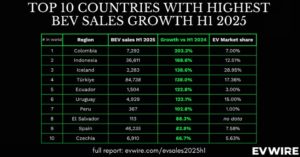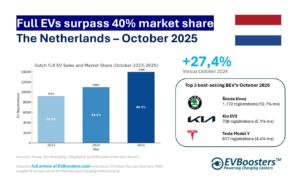Federal policies fuel investment surge
The report underscores the critical role of federal policies in accelerating the growth of the EV sector. Since the passage of the IRA in August 2022, 63% of all announced EV investments have been made, accounting for $126 billion. Similarly, 83% of the investments have occurred since the BIL was enacted in November 2021. This influx of capital has been crucial in establishing the U.S. as a global leader in EV manufacturing, with 215 distinct projects at 179 sites across the country.
Job creation and economic impact
The surge in investment has had a profound impact on job creation in the U.S. EV industry. Over the last 9 years, 201.900 new jobs have been announced, with 54% of these occurring in the 2 years since the IRA was passed. The report suggests that the cumulative impact of these investments could result in up to 931.000 additional indirect and secondary jobs, significantly boosting local economies across the country.
State-by-state breakdown: The race to lead in EV manufacturing
10 states have emerged as major beneficiaries of this investment boom, accounting for 84% of all announced EV manufacturing investments. Georgia leads the pack with over $31 billion in investments, creating 39.400 jobs. Michigan and North Carolina follow with $21,5 billion and $19,5 billion in investments, respectively, supporting a combined 35.400 jobs.
These states are becoming hubs of innovation and production in the EV sector. For instance, Ford is set to open BlueOval City in Tennessee, which will produce electric pickups and batteries, bringing nearly 11.000 new jobs to the state. Similarly, Hyundai’s Metaplant America in Georgia, which broke ground in 2022, is expected to create 8.500 full-time jobs and has already attracted 17 offsite suppliers, further boosting the local economy.
Expanding production capacity
The report projects significant increases in production capacity over the next few years. By 2027, U.S. EV manufacturing facilities will be capable of producing approximately 5,8 million new electric vehicles annually, which would represent 36% of all new vehicles sold in the U.S. in 2023. Additionally, U.S. battery manufacturing facilities are expected to produce 1.164 gigawatt hours (GWh) of EV batteries by 2028, enough to power 13,2 million passenger vehicles.
The road ahead: Continuing growth and challenges
The momentum behind EV investments in the U.S. is expected to continue, driven by ongoing federal incentives and the global transition towards electric mobility. However, the report emphasises that each new investment presents an opportunity to establish high standards for job quality and community benefits. Policymakers are urged to collaborate with employers, labor unions, and community organisations to ensure that the benefits of onshoring EV manufacturing are maximised for both workers and local communities.
Conclusion
The report paints a promising picture of the future of U.S. EV manufacturing. The substantial investments and job creation spurred by federal policies not only position the U.S. as a leader in the global EV market but also provide a blueprint for sustainable economic growth. As the U.S. continues to expand its EV manufacturing capacity, the challenge will be to ensure that this growth benefits all stakeholders, from workers to communities, across the nation.
Source: EDF







